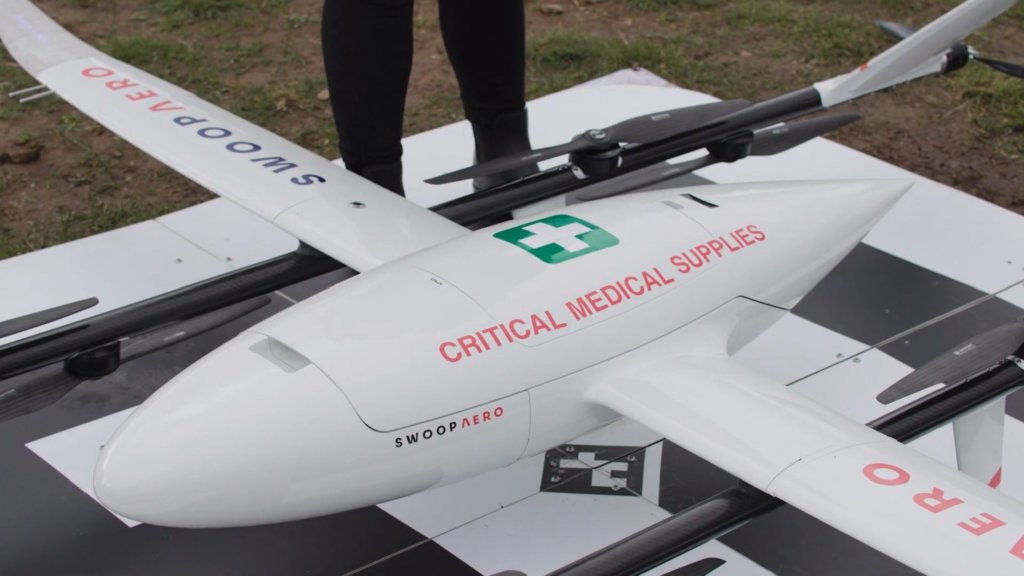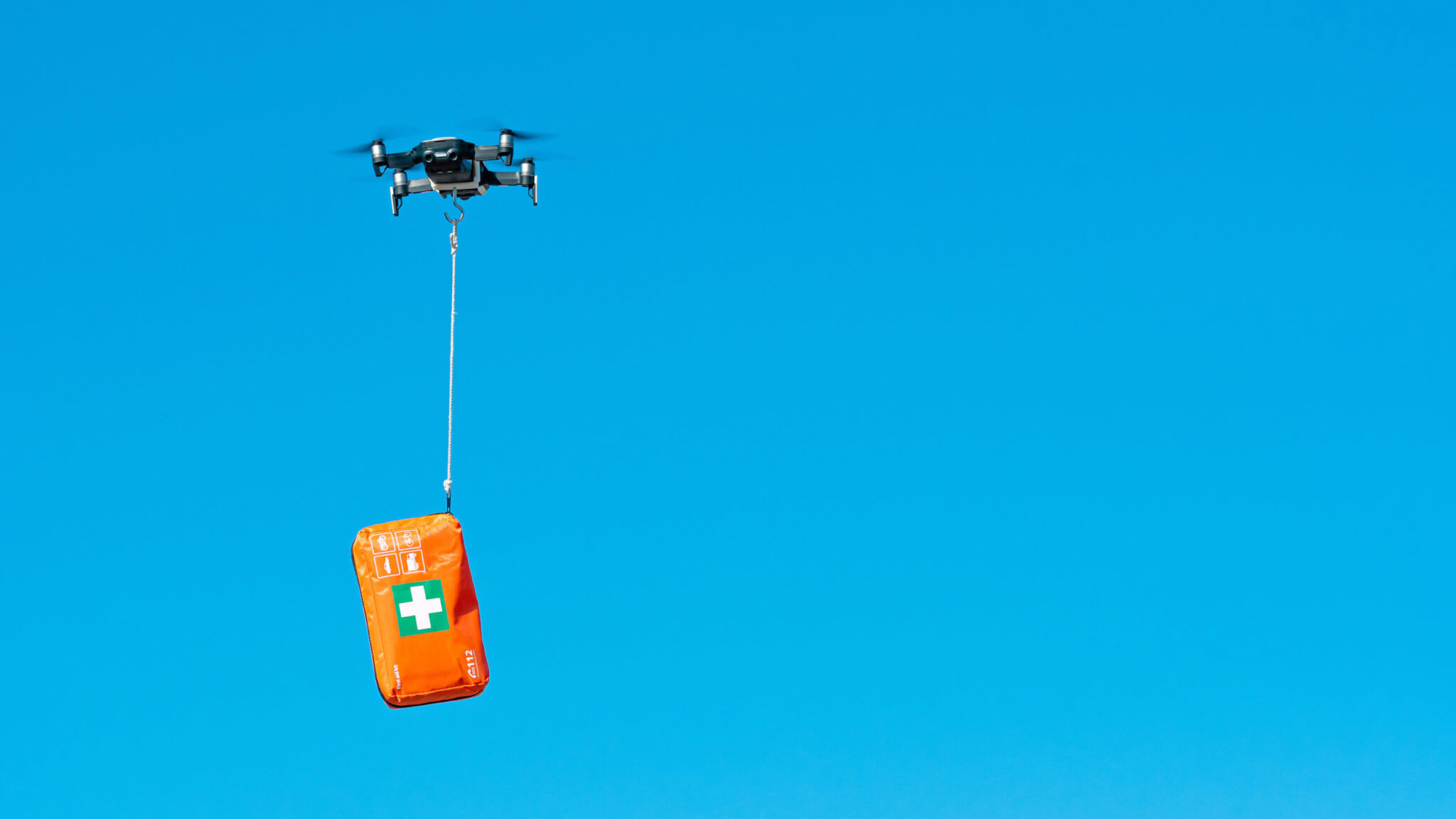In a recent post, we explored how ambulance drones are revolutionizing the way emergency medical teams respond to scenarios that require rapid treatment. Truth be told, drones are one of the most exciting medical technology advancements in recent years—and something that providers of all sizes are now using.
As it turns out, emergency response is just the tip of the iceberg for drones in the healthcare industry. In fact, there are several other ways that medical providers are using drones—or unmanned aerial vehicles (UAVs)—apart from emergency deployments.
This post explores the increasing role that medical drones are playing in healthcare environments and why they are a key enabling technology that all medical facilities should have on their radar.
What Is a Medical Drone?
In short, a medical drone is a type of UAV that healthcare providers use to transport medical items and interact with patients from a distance. In most cases, healthcare providers use drones to move supplies across the medical supply chain—from clinicians and offices to patients, lab partners, and waste disposal centers.
Drones are becoming increasingly reliable and less expensive, making them an ideal emerging technology for medical providers for both emergency and non-emergency purposes. As such, it comes as no surprise that the medical drone market is growing exponentially. According to one report, the global medical drone industry is on track to reach about $643 million by 2027.
What Types of Drones Do Medical Providers Use?
Despite what the name might suggest, a medical drone is just like any other type of commercial drone. In other words, these are the same types of craft that you see in other industries, like utilities and transportation.
Medical IT teams typically enhance drones with cameras, sensors, and lights to support unique navigation, data collection, and communication needs.
When it comes down to it, there are several different types of drones, each of which is better suited for specific use cases.
Multi-rotor
Multi-rotor drones contain multiple lift-generating rotors. They are inexpensive and can usually transport between 50 and 100 pounds, making them ideal for small medical deliveries. These types of drones are also ideal for aerial photography and data collection. For these reasons, emergency response teams often use multi-rotor drones to aid in rescue operations.
Single Rotor
Like the name suggests, single-rotor drones have just one rotor, making them similar to helicopters in design. Operationally, they are much more efficient than multi-rotor drones and can fly for longer periods at a time. However, they are often also heavier, far more complex, and more expensive.
Fixed-Wing Drones
Some medical providers are now using fixed-wing drones, which resemble airplanes, and fixed-wing hybrids, which incorporate wings and rotors. These types of drones are better suited for flying long distances.
Passenger Ambulance Drones
Several companies are now experimenting with passenger ambulance drones, which can transport patients and medical staff from one place to another through the air. To be sure, it will be some time before these types of aircraft become commercially viable. But they could potentially transform emergency medical response at some point in the future.
Of note, medical IT teams should work closely with HIPAA officers to monitor drone use and establish agreeable data privacy and security policies. After all, the last thing you want is to roll out new technology only to find out you’re violating regulations.
What Are the Benefits of Medical Drones?
Medical drones offer a variety of benefits for healthcare providers, making them increasingly popular. With that in mind, let’s take a look at some of the advantages that come with using medical drones.
Safe to Use
Medical drones don’t require any pilots, making them much safer than traditional transportation vehicles like cars, helicopters, and airplanes.
Of course, drones aren’t entirely without risks. Some of the top threats to drones include radio frequency interference and potential theft. Medical teams are strongly encouraged to follow FAA guidelines and to monitor local weather conditions before deploying UAVs in the field.
Fly Long Distances
Recent advancements in beyond visual line of sight (BVLOS) technology enable drones to safely fly longer distances than before. As a result, drones can transport sensitive items to partners outside of the immediate area.
Save Money
Drones can vary in price depending on their model and size. In general, drones typically come with less capital and operational expenses than traditional transportation mechanisms. Commercial drones can cost anywhere from $500 to $5,000, depending on the make and model.

Deploy Quickly
Most drones are very easy to deploy and don’t require much of a learning curve. Medical providers can also easily deploy drones from parking lots, rooftops, and surrounding fields.
While commercial drones require FAA operator certification, you do not have to be a technical whiz to receive approval or operate a device. Most people can learn to fly drones with minimal training, making them a convenient and useful technology.
Medical providers can also easily deploy drones from parking lots, rooftops, and surrounding fields
Medical Drone Use Cases
Without a doubt, medical drones offer several advantages to emergency response teams. Equally important, medical drones provide a range of useful services for non-emergency scenarios, which we’ll examine in this section.
Transporting Devices and Materials
In the past, transporting materials to and from patients was time-consuming and expensive. Now, many providers are using drones to transmit items like small medical devices and hazardous materials. Drones enable touchless interactions, which helps reduce the spread of infectious diseases.
In addition, a growing number of practices are using drones to deliver medical treatment kits directly to patients in their homes. This is especially useful for cases where it would be too difficult or disruptive for the patient to travel to a facility for in-person care.
Diagnostics
Diagnostic tests often come with very short windows of time between the point of collection and analysis. Medical providers often use drones to transmit samples immediately between medical campuses for rapid testing. Drones are highly useful in this scenario because they can fly quickly and efficiently between different points and overcome terrain challenges.
Spreading Vaccines
Global health providers are now looking for different ways of transmitting vaccines to rural and remote areas—and drones are helping the cause.
Drones allow safe, easy, and efficient access to places that are difficult or dangerous to reach through traditional delivery means. By using drones, providers can ensure that people who need vaccines can obtain them in a timely manner.
Enabling Home Healthcare
Currently, there is rising demand for home healthcare, particularly among older patients who want to age in place.
By using drones, healthcare providers can deliver essential items like medicine and lab reports, and they can even provide periodic inspections for safety purposes.
By using drones, healthcare providers can deliver essential items like medicine and lab reports, and they can even provide periodic inspections for safety purposes
Delivering Organ Transfers
Medical providers often need to transport organs in a timely manner, making traditional options like airplanes and cars impractical.
Instead, providers are increasingly using drones to quickly move organs between medical facilities. Drones allow for speedier and safer deliveries and improve the odds of getting precious deliveries to their destinations in a timely manner.
Want to Use Medical Drones? Iris Automation Can Help
The benefits of medical drones speak for themselves. But before you can start flying drones, you need to do some back-end work—which includes shopping for drones and obtaining FAA approval. This can take some time and research, so get ready.
Good news: Iris Automation can help streamline the process by providing expert insights, along with an accelerated beyond visual line of sight (BVLOS) regulatory approval process. Iris Automation also offers proven collision avoidance through the Casia system, enabling safe and compliant long-distance air transport.
To learn more about how Iris Automation helps businesses with their commercial drone needs, explore our use cases.
This post was written by Justin Reynolds. Justin is a freelance writer who enjoys telling stories about how technology, science, and creativity can help workers be more productive. In his spare time, he likes seeing or playing live music, hiking, and traveling.

